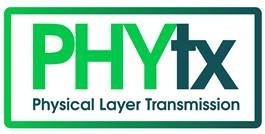This WT provides cable models which can be used in Broadband Forum Working Texts/Technical Reports for interoperability and performance testing of the transmission technologies such as ITU-T G.9701 (G.fast). These cable models provides the transfer functions of both direct path and crosstalk paths of the Loop End Access Network and addresses both the attenuation and phase of these transfer functions. Amendment 1 adds additional cable models.Active Non-PS assigned Projects
WT/MD/SD# Projects Abstract Related Contributions Editors WT-285i2a1 Copper Transmission Models for Testing above 30 MHz WT-285 Andre Holley
Provides use cases and fiber extension architectures with its elements as a generalization that does not preclude any type of technology or deployment approach. In the annexes these architectures are mapped to the specific technologies. Issue 2 intends to add new Use Cases, including wholesale and 5G FMC; cover Architectural, Management and Operational aspects as wel as Technology specific aspects of PON fiber access extension over P2MP topologies A Home distribution network (HDN) is the infrastructure for delivering multi-gigabit services to end users. In general, modern home networks are composed of a mix of diverse transmission technologies. The current challenge for telecom operators and service providers seeking to roll-out future-proofed fiber-grade services is to quickly/easily/low-costly deploy reliable broadband connectivity to end users in homes and businesses over such high-performance heterogeneous home network. This technical report intends to provide some insights into home network use cases to facilitate the task of understanding the specificities of enabling a service provider-oriented home network. Active FANCE Projects
WT/MD/SD# FANCE Projects Abstract Related Contributions Editors WT-419i2 Fiber access extension over existing copper infrastructure WT-419 WT-476 Performance Test Plan for use of G.hn technology in access scenarios The goal is to provide performance requirements between a G.hn Aggregation Multiplexer (GAM) and one or more G.hn Network Terminations (GNTs). The focus is on the device level (DLL and PHY) testing, similar to how TR-380 is defined. This performance test plan will include test setup information, equipment configuration requirements, test procedures, and performance requirements for each test case. WT-476 Marcos Martinez WT-488 Architecture and Requirements for Home Distribution Networks WT-488
This document is intended to provide a certification test plan for ITU‑T Recommendation G.9700 “Fast access to subscriber terminals (G.fast) – Power spectral density specification” and G.9701 “Fast access to subscriber terminals (G.fast) – Physical layer specification”. This IR-337 is specifically conceived for the basic interoperability objectives of the Broadband Forum G.fast Certification Program. Technical content in this test plan includes test setup information, equipment configuration requirements, test procedures, and pass/fail requirements for each test case. Issue 4 intends to add Robust Management Channel Recovery (RMCR) and sub-carrier masking tests, tests for Low power operation and tests for accuracy and updating of reported G.fast parameters. With short copper loops required by G.fast Distribution Point Units (DPUs) that push the deployment of the DPU/MDUs closer to the customer premise, local power and forward power may not be viable to cost or location. To power the DPU, power will come from the customer premises location over the copper pair; this is referred to as Reverse Power Feed (RPF). This document specifies tests for the RPF functions of a DPU and the customer premises’ Power Supply Equipment (PSE) either as a stand-alone device or as a function integrated in a G.fast Network Termination. Issue 3 will define a set of RPF-over-coax functional and safety test cases for the Power Source Equipment (PSE) implemented according to ETSI specification TS 101 548-2, either as a stand-alone device or as a function integrated in the G.fast (G.9700 and G.9701) network termination, and reversely powered DPU implementations. It will include also RPF integrated in G.hn Access and MoCA Access network termination. This document applies only to the operational aspects of the certification program, such as:Active Gfast and RPF Projects
WT/MD/SD# Bonding Projects Abstract Related Contributions Editors G.fast Certification Test Plan DTP-337 Frank Van der Putten OD-335 G.fast Interop Plugfest Test Plan Interoperability among multiple chipsets and systems will be critical to the success of G.fast. This document defines a suite of basic physical layer tests for G.fast. The intent is to provide a structure for vendor-to-vendor interoperability tests, known as "Plugfests". OD-335 WT-338i3 Reverse Power Feed (RPF) Test Plan WT-338 Helge Tiainen OD-362 Program Requirements for G.fast Certification Program OD-362 Lincoln Lavoie
Completed or Inactive Project Streams
- These can be found on the PHYtx - Archived Project Streams and Projects page
